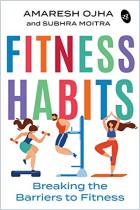Join getAbstract to access the summary!

Join getAbstract to access the summary!
Michelle Segar
No Sweat
How the Simple Science of Motivation Can Bring You a Lifetime of Fitness
AMACOM, 2015
What's inside?
To change your behavior – including adding exercise to your routine – set goals based on motives that align with your sense of self.
Recommendation
Most people start an exercise program to lose weight, gain energy and enjoy better health. And most people quit not long after they start. A better approach is to find your motivation and set goals for your health and for daily, fun movement that align with your sense of self. Behavioral scientist, researcher and coach Michelle Segar explains how to set up an exercise and wellness regime based on her “MAPS program” of “meaning, awareness, permission and strategy.” An expert on sustaining long-term motivation, she urges you to take on an informal, fun activity, such as walking or dancing, that you enjoy. getAbstract recommends her manual – the 2015 USA Best Book Awards’ top diet-exercise book – to anyone who wants to get and stay healthy.
Summary
About the Author
Motivation scientist Michelle Segar, PhD, directs the Sport, Health and Activity Research and Policy (SHARP) Center at the University of Michigan and chairs the US National Physical Activity Plan’s Communications Committee.























Comment on this summary